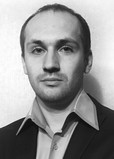Powerlifting practices in compensatory fatigue phase to improve shooting accuracy in basketbal
Фотографии:
ˑ:
PhD, Associate Professor M.A. Rogozhnikov1
PhD, Professor K.N. Dementiev1
PhD, Associate Professor V.V. Volsky1
A.G. Sergeeva1
1St. Petersburg State University of Architecture and Civil Engineering, St. Petersburg
Shooting accuracy in basketball is known to be best trained in the compensatory fatigue phase with its progressive growing general fatigue when the athlete is still able to cope with the game intensity for some time by individual adjustments to the movement biomechanics.
Having analyzed the Saint Petersburg academic basketball game statistics available on the official International Basketball Federation FIBA website, we found the teams normally losing the matches when their leaders are injured or foul 5 times and removed from the field, with the other team members being unable to take the lead. We offer the shooting accuracy improving powerlifting tools driven training technology applicable in the compensatory fatigue phase.
Sampled for the new model testing experiment were the Saint Petersburg State University of Architecture and Civil Engineering student players (n=20) of the both sexes split up into the Reference group and Experimental group of 10 people each with equal (5+5) gender shares.
The tests found the new powerlifting and weight application practices in compensatory fatigue phase being beneficial for the shooting accuracy improvement purposes. The application of the methodology, that includes powerlifting exercises of moderate intensity against the background of compensatory fatigue, along with regular exercises with own weight will more effectively improve the shooting accuracy of basketball players. However, the problem requires a more detailed study.
Keywords: basketball, coordination abilities, throw accuracy, fatigue.
References
- Dementiev K.N., Volskiy V.V., Rogozhnikov M.A. Vremennye kharakteristiki obratnogo krugovogo udara nogoy v bezopornom polozhenii s vrashchenie 540° [Aerial 540° reverse hook kick in taekwondo: timing aspect]. Teoriya i praktika fiz. kultury, 2017, no. 11, pp. 75-76.
- Dementiev K.N., Pristav O.V. Tekhnologiya uskorennogo razvitiya skorostno-silovykh kachestv u kursantov vuza zheleznodorozhnykh voysk na nachalnom etape obucheniya [Technology of accelerated development of speed-strength qualities in cadets of railway academy at initial training stage]. Uchenye zapiski un-ta im. P.F. Lesgafta, 2007, no. 5, pp. 34-38.
- Rogozhnikov M.A. Obuchenie yunykh tkhekvondistov bezopornym slozhnokoordinatsionnym tekhnicheskim deystviyam. Dis. kand. ped. nauk [Teaching young taekwondokas unsupported complex coordination technical actions. PhD diss.]. St. Petersburg, 2016, 187 p.
- Rogozhnikov M.A. Razvitie vzryvnoy sily myshts nog u yunykh tkhekvondistov dlya vypolneniya slozhnokoordinatsionnykh tekhnicheskikh deystviy [Explosive leg strength training for complex coordinated techniques in youth taekwondo]. Teoriya i praktika fiz. kultury, 2017, no. 11, pp. 60-61.
- Rogozhnikov M.A., Sergeeva A.G. Ispolzovanie sredstv batutnoy podgotovki dlya rasshireniya vozmozhnostey primeneniya slozhnokoordinatsionnykh tekhnicheskikh deystviy tkhekvondo [Trampoline training tools to expand range of complex coordinated techniques in taekwondo]. Teoriya i praktika fiz. kultury, 2018, no.9, pp. 72-74.
- Izotov E.A. Ideomotornaya trenirovka v igre darts v kontekste vzaimosvyazi kachestva predstavleniy s effektivnostyu ovladeniya tehnikoy broska drotika [ideomotor training in darts in context of correlation of quality of visualization and efficiency of mastering dart throwing technique]. Teoriya i praktika fiz. kultury, 2014, no. 2, pp. 16-19.
- Kuvanov V.A., Korostelev E.N., Zaytsev A.V. Upravlenie myshechnym tonusom v sportivnoy borbe [Management of muscle tone in sports wrestling]. Teoriya i praktika fiz. kultury, 2018, no. 4, pp. 57-59.



 Журнал "THEORY AND PRACTICE
Журнал "THEORY AND PRACTICE